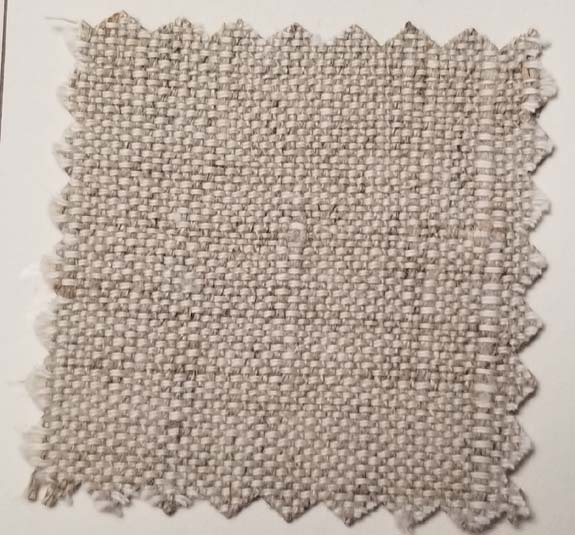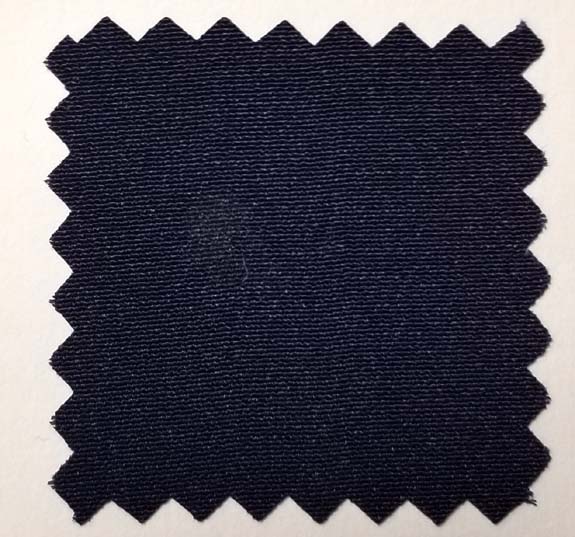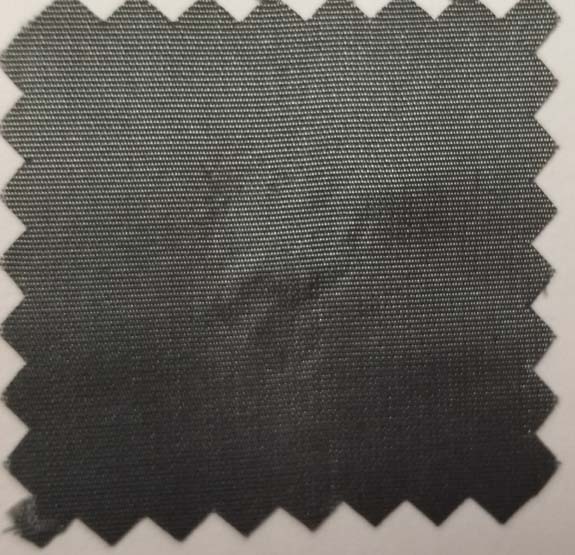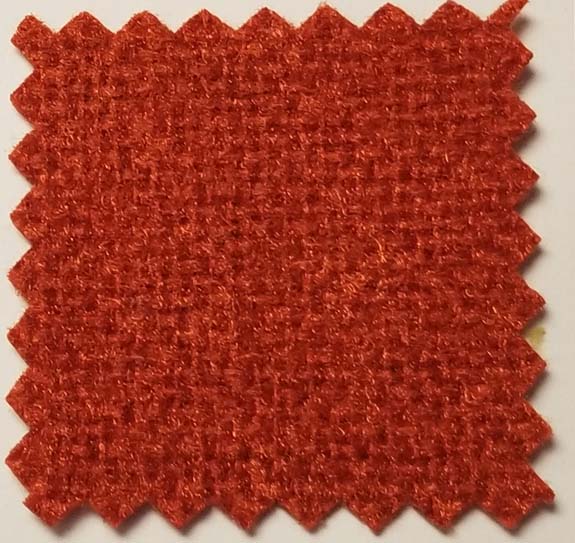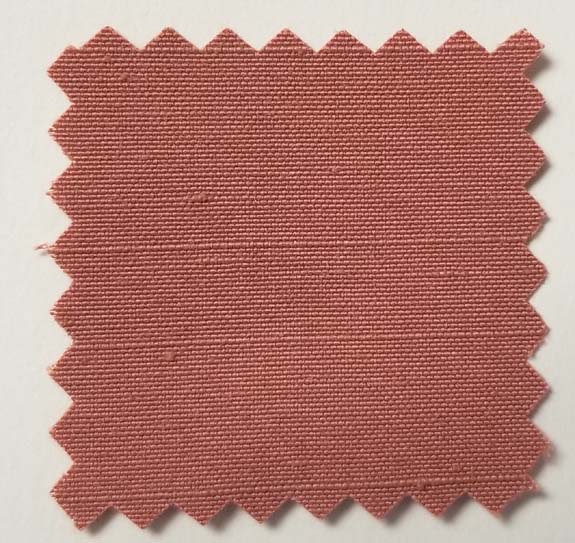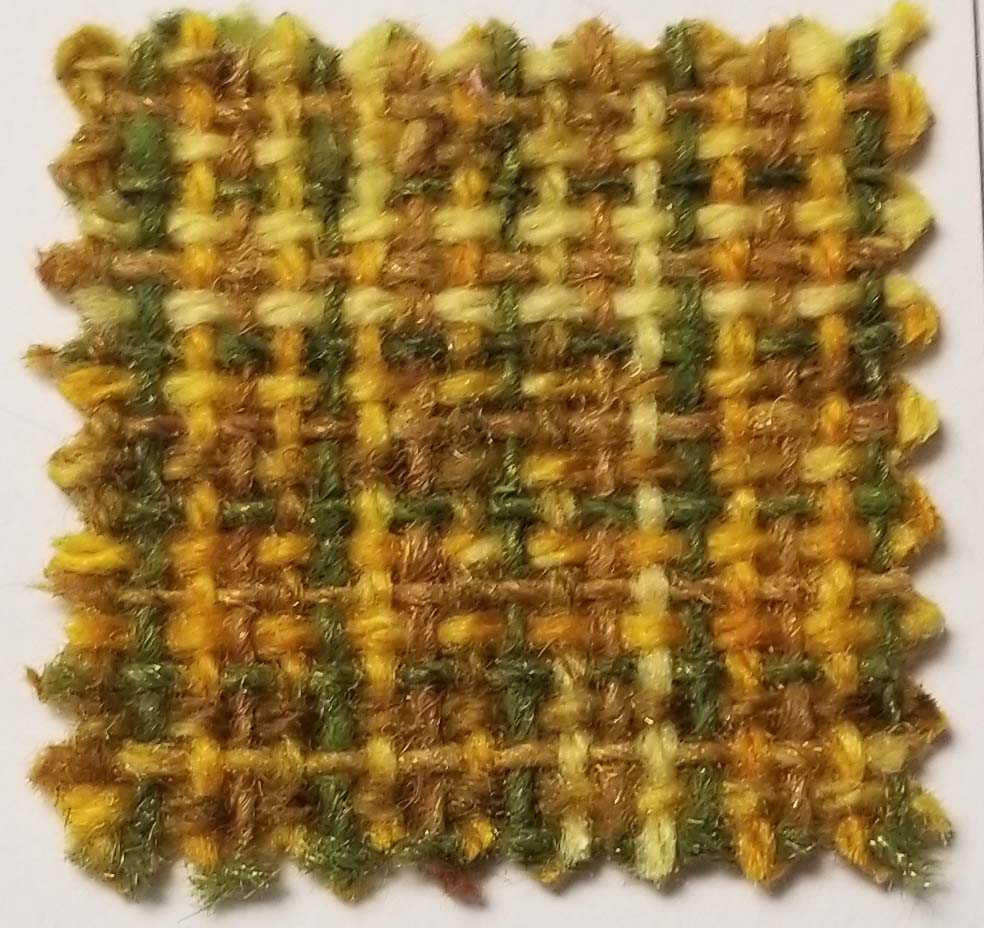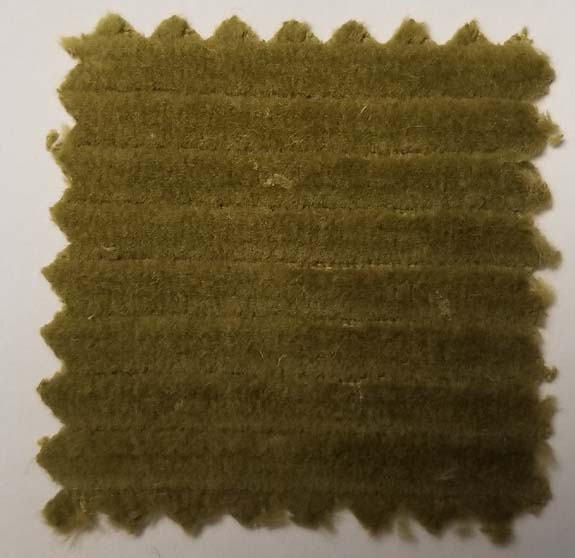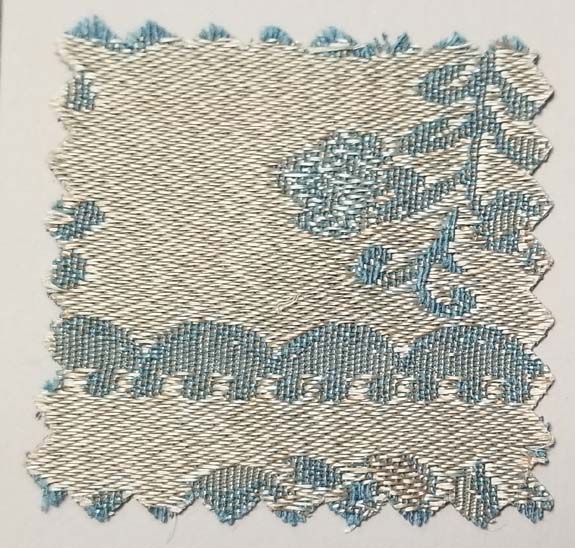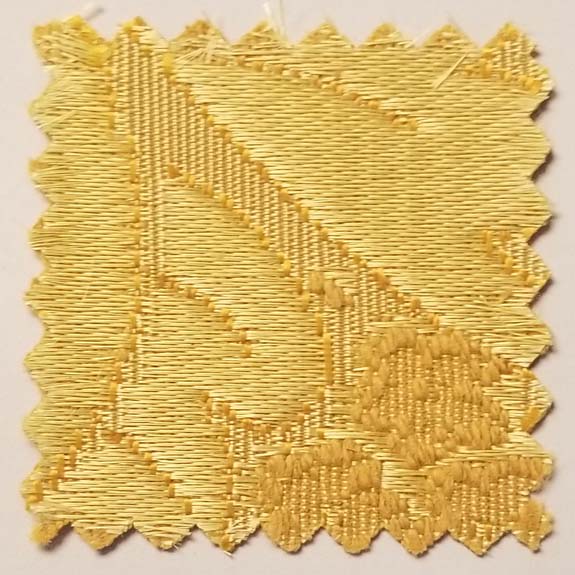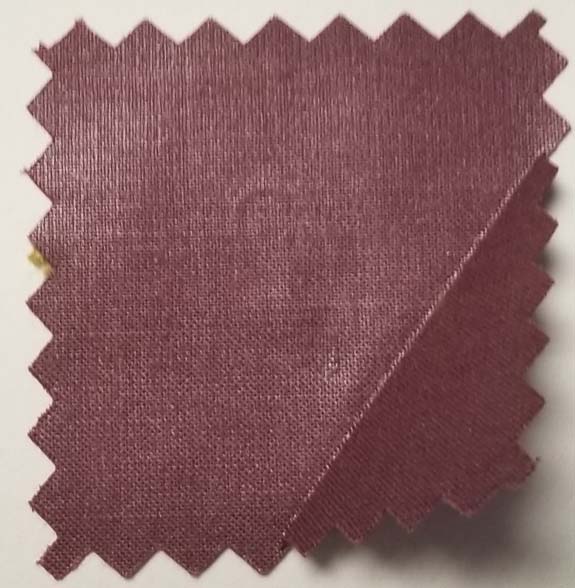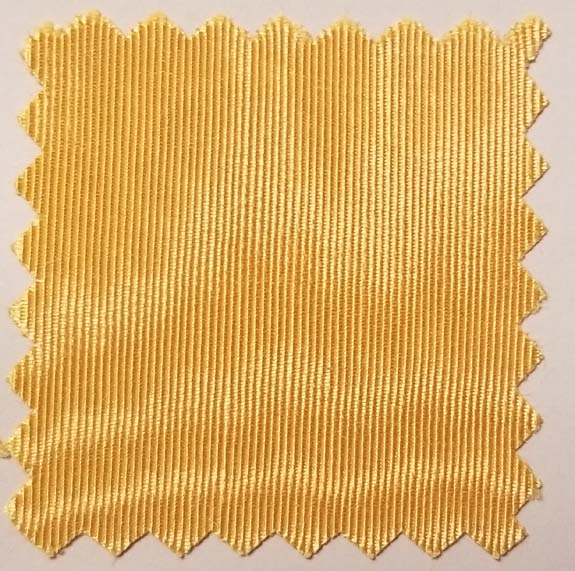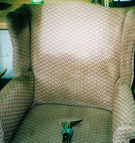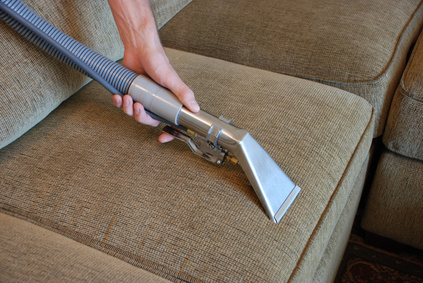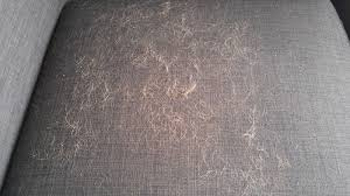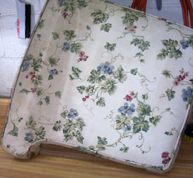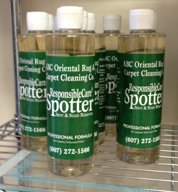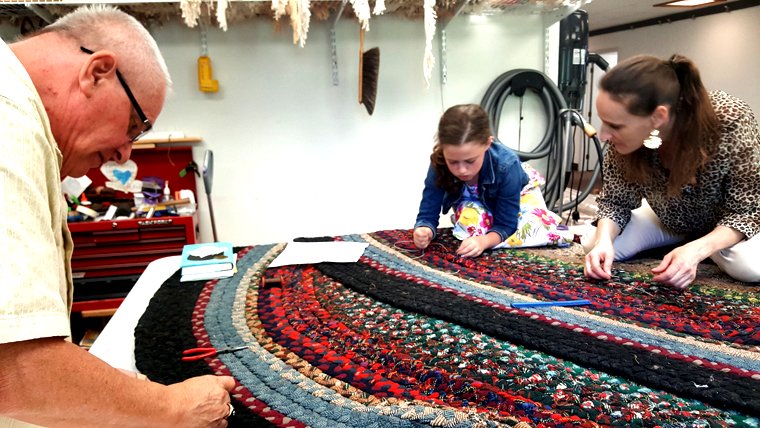UPHOLSTERY FABRIC ID
Upholstery fabric ID can provide a consumer with crucial information about the cleanability, general maintenance, and durability of upholstered furniture. It can give clues as to whether or not a certain fabric will hold up to pets, children, spills, stains, sun, etc. The plethora of different types of available upholstery fabric can be very confusing to someone seeking the best option for his or her individual or family needs.
Upholstery fabric can consist of natural or synthetic fibers and any combination of the two. The type of fabric and the type of weave as well as the particular finish that may have been applied to the fiber and the type of dye, and whether it is colorfast or not, are all matters of concern to help determine the best fit for the purchase of a quality piece of upholstered furniture (which could be one of the more expensive items to purchase for a home or business).
When a consumer has a general knowledge of upholstery fiber ID (which includes the type of weave, finish, and dyes) of the fabric covering a particular piece of upholstered furniture, he or she can then make an informed purchase decision.
UPHOLSTERY FABRIC ID
NATURAL FIBERS
There are 3 common types of natural fibers:
- Cellulose Fibers
- Protein Fibers
- Regenerated Cellulose
CELLULOSE FIBERS
COTTON
Advantages:
- 15 % stronger when wet. Treating it chemically increases the strength and adds luster.
- Most important quality is absorbency. It will absorb cleaning solutions as well as perspiration and oils.
- Cotton fibers are not actually susceptible to shrinkage until manufactured, when they are stretched on the loom, and then return to their original length in the first washing. (Cotton does not shrink in the rain while growing!) Subsequent washing will usually not cause more shrinkage.
- Cotton is naturally moth resistant.
- Does not melt.
Disadvantages:
- Very flammable.
- Susceptible to mildew and silverfish.
- Cotton also has a tendency to brown or turn yellow, called cellulose browning. This can usually be reversed by a professional procedure.
- Cotton with a glaze has a shiny finish which is usually permanent but can be removed if improperly cleaned.
- Cotton can be damaged by sunlight and oxidation.
Cleaning:
- Clean or treat with high alkaline cleaning solution if dyes are colorfast.
- The dye, finish, design, etc. determines whether the fabric should be wet or dry cleaned.
LINEN
Advantages:
- Linen is spun from flax fiber and is similar to cotton.
- It is 2 to 3 times stronger whether wet or dry.
- Shrinks less than cotton.
- Naturally moth resistant.
Disadvantages:
- Has poor fiber elasticity and is therefore naturally stiff.
- Can be damaged by sunlight and oxidation as can cotton but at a slower rate than cotton.
- Not very resilient and wrinkles easily.
Cleaning:
- Resistant to alkalies.
- Avoid strong acids when cleaning or treating.
- Can be wet or dry cleaned.
PROTEIN FIBERS
WOOL
Advantages:
- One of the most durable, hard-wearing fibers.
- Wool fiber has elasticity, resilience, and bulk.
- Wool can absorb 30% of its weight in moisture thus making it easy to dye.
- It is resistant to abrasion and wears well.
- Wool has a natural crimp and will resist crushing and distortion and recover its shape well.
- Is non-flammable.
- Does not soil easily.
- Resists and recovers from wrinkles.
- Can be dyed easily.
Disadvantages:
- Excessive moisture could lead to mildew or mold if not dried thoroughly.
- Loses strength when wet.
- Wool shrinks when subjected to heat and moisture.
- It is more resistant to sunlight than cotton but will yellow over time.
- If not specially treated, wool can be damaged by textile insects such as moths and carpet and furniture beetles.
Cleaning:
- Avoid strong alkalies and concentrated solutions of strong acids when cleaning or treating.
- Can be wet or dry cleaned (wet only if colorfast).
SILK
Advantages:
- Silk fibers are the strongest animal/protein fibers.
- Their elasticity and high absorption characteristics allow for finish applications and dye techniques.
- Accept dyes well.
- Can have low abrasion resistance.
Disadvantages:
- Can be easily yellowed and damaged by age, sunlight, and perspiration.
- Tends to water spot if not treated.
Cleaning:
- Dry cleaning is the safe recommendation because water can produce watermarks and dye bleeding.
REGENERATED CELLULOSE FIBERS
RAYON
Advantages:
- Rayon is sometimes known as imitation silk.
- Usually blended with cotton and synthetics.
- Low resistance and poor dimensional stability.
Disadvantages:
- Rayon dries hard when exposed to air but is inherently weak.
- It can absorb more moisture than cotton or linen but the fibers swell, reducing its strength by 50%.
- Wrinkles easily when wet.
- Poor resistance to abrasion.
- Susceptible to mildew damage.
- Extended exposure to sunlight can be damaging.
- Rayon can shrink more and more each time it is wet but does not return to its normal length.
Cleaning:
- Avoid acids and strong alkalies when cleaning or treating.
- Wet or dry Clean.
ACETATES
Advantages:
- Resistant to moisture, mold, mildew, and moths.
- Resists shrinking.
- Resists wrinkling.
Disadvantages:
- Acetates, like rayon, are weaker when wet.
- Also, like rayon, they are usually found in blended fabrics.
- Not abrasion resistant.
- Sunlight and oxidation deteriorates acetates.
Cleaning:
- Weakened by strong alkalies and strong acids.
- Acetone completely dissolves acetates.
- Can be wet or dry cleaned.
UPHOLSTERY FABRIC ID
SYNTHETIC FIBERS
Nylon
Advantages:
- One of the best-wearing fibers due to its high strength and abrasion resistance.
- Resilient.
- Low water absorbency.
- Easily cleanable.
- Is elastic and wrinkle resistant.
- Resistance to alkaline substances, mildew, and insect damage.
- Low moisture absorbency means quick drying and dimensional stability.
- Can be dyed with different types of dye.
- Very elastic and can recover well from crushing and distortion.
- Can be cross-dyed by combining two or more types of nylon, each accepting a different type of dye to make a tweed or multicolored effect.
- Abrasion resistant.
Disadvantages:
- Moderately resistant to ultraviolet light but can be damaged by prolonged exposure to sunlight.
- Tends to pill due to its high strength.
Cleaning:
- Can be damaged by strong acids.
- Some old, set-in stains can be stubborn to remove. Oily soil may need special treatment.
- Usually wet cleaned.
Common Trade Names: Anso, Antron, Ultron, Zeftron, Enkaloft.
POLYESTER
Advantages:
- Often blended with cottons.
- Wrinkle resistant.
- Resilient.
- Dimensionally stable.
- Resistant to moths and mildew.
- Low level of moisture absorbency so dries quickly.
- Abrasion resistant.
- Resists sunlight damage.
Disadvantages:
- Not as strong as nylon.
- Is difficult to dye or stain because of its dense molecular structure.
- May attract oily soil and oil-borne stains.
- Not much pure polyester upholstery fabric is manufactured.
Cleaning:
- Cleaning or treating with acids is safe. Strong alkalies will damage it.
- Usually wet cleaned but may need a combination of dry and wet cleaning if heavily soiled.
Common Trade Names: Dacron, Fortrel, Kodel, Trevira.
OLEFIN
Advantages:
- Has the lowest moisture absorbency of all fibers which means it has excellent stain resistance and cleanability.
- Water based spills remain on the surface instead of penetrating the fabric.
- It is relatively strong.
- Colorfastness is excellent.
- Resists sunlight damage.
Disadvantages:
- Oils can enter the fiber structure and oxidize, leaving permanent discoloration.
- It is resistant to abrasion but texture distortion can occur.
- It is not resilient and does not have good elastic recovery.
Cleaning:
- Wet cleaning.
ACRYLIC
Advantages:
- Has wool-like 'hand'.
- Resists shrinkage.
- Resistant to moisture.
- Low moisture absorbency helps it resist stains.
- It dries slowly since water can be trapped between its fibers.
- Can be cross-dyed like nylon to produce multi-color effects.
- The strength of acrylic is fair to good, slightly lower when wet.
- Very resistant to UV light.
Disadvantages:
- Very sensitive to heat.
- Tendency toward pilling.
- Tendency to retain oily stains.
- It is not resilient and does not have good elastic recovery.
Cleaning:
- Not affected by cleaning or treating with acids or alkalies. Can be damaged by strong concentrated acids
and hot, strong alkalies.
- Resistant to bleaches.
- Can be wet cleaned.
Common Trade Names: Acrilan, Creslan, Orlon, Zefran.
UPHOLSTERY FABRIC ID
TYPE OF WEAVE
There are several types of weave of upholstery fabric:
- Plain – nondurable.
- Twill – slightly strong.
- Satin - gives material a lustrous look or sheen.
- Pile - corduroys or velvets. Can be subject to crushing.
- Jacquard - a complex and intricate weave woven on a jacquard loom. The pattern is formed by the warp yarns and stands in low or high relief from the background. May be able to hide stains.
UPHOLSTERY FABRIC ID
FINISHES
Examples of some types of upholstery finishes:
- Applied or Embossed finish.
- Chintz glaze gives it a high luster, which may be removed with cleaning.
- Moire – wavy or water-marked effect.
UPHOLSTERY FABRIC ID
DYEING
There are many different ways of applying dye to upholstery fabric. These can include but are not limited to the following:
- Solution
- Space
- Beck
- Continuous
Acid dyes are generally used for wool, silk, and nylon. Metal complex dyes can be used for wool. Dispersed dyes are used for cellulose fibers and acetate.
The consumer should be concerned about whether or not the dyes are colorfast. There are tests we can perform in our rug plant to determine this. If you are planning to purchase a piece of upholstered furniture, we would be happy to test a swatch or a small cushion.
UPHOLSTERY FABRIC
CLEANING
Upholstery fabric can be cleaned with one of the following or a combination of these:
- Absorbent Compound
- Dry Foam
- Dry Solvent
- Hot Water Extraction
- Shampoo
Dry Solvent is used for fabric or dyes that can be damaged with water.
Absorbent Compound and Dry Foam can be used where minimal amounts of water can be used.
The Shampoo method and Hot Water Extraction can be used where fabrics and dyes can be wet cleaned.
May need to use a combination of methods to get the best results.
Drying equipment will expedite the drying process and limit any risks.
Additionally, if new upholstery has a fabric tag or label (on the decking which holds the cushions), check the cleaning codes:
- S is for solvent or dry cleaning.
- W is for water-based cleaning.
- S-W can be cleaned with either dry or wet cleaning.
- X means the fabric can only be vacuumed.
The choice for a pet for child friendly fabric should be the W code.
It is also important to note the white tag on upholstery with the "Do Not Remove Under Penalty of Law" advisory ONLY pertains to the internal material of the piece of furniture. The above cleaning codes refer to the actual fabric covering and may not be tagged on every piece of furniture. When purchasing new upholstered furniture, always ask if there are manufacturer's suggestions for cleaning and spot removal available if a tag is not found.
SOME NOTES ABOUT MICROFIBER UPHOLSTERY FABRIC
MICROFIBER
The middle of the 20th century brought an expansion to the manufacturing of synthetic fibers. It was found that leftover waste from oil refining (normally used to fill up landfills) known as polypropylene could be manufactured into a a thin synthetic fiber called olefin to make upholstery fabric.
The olefin fibers were ideal to use in the production of car upholstery, home and office carpeting, and even some draperies. During the 1970s, an olefin fiber made by a company named Hercules, Inc. caught on in a big way and was branded as Herculon.
Further experimentation with polypropylene led to the development of the superfine fibers we today call microfibers. These fibers are even finer than silk and very resilient. They could be used in textile applications where the broader weaves and higher density of olefin could not.
Microfiber has actually been around for quite some time. In the late 1970s, Ultrasuede was introduced as microfiber made with synthetic polyester. It was only when it became very apparent consumers wanted furniture with a 'soft touch' did microfibers come into their own, because they provided the feel of suede and the softness of natural fiber textiles combined with much easier maintenance. Microsoft upholstery fabric also holds its color well so it will look fresh and new longer than many other fabrics.
There is a reason why these strong, resilient fibers can feel like more delicate natural fibers. There is enough space between the fibers to allow the material to breathe and allow body heat and moisture from the person sitting on it to migrate away, creating the cool feel that usually only comes from natural fibers. That same characteristic also gives it an extremely appealing 'soft hand'.
Microfiber is typically very strong and durable and the fibers can be woven into much tighter weaves. This has some major advantages when used as upholstery fabric:
- Less dust and allergens can sink into and through the fabric. This makes the furniture more hypoallergenic.
- Liquid spills will bead up on the surface of the fabric instead of immediately soaking into the fibers. This can give some time to blot up the liquid before it makes a stain.
- For homes with pets, it is easier to remove pet hair and the hair does not get embedded as it would with looser weaves. Scratch marks are also fairly easy to brush off or buff out. For more in-depth information on pet-friendly upholstery fabric, please see our article here.
- Tighter weaves don't tend to fray and wear as easily as larger and more open weaves.
Microfiber can also be found in drapes, linens, and mops. It is flammable so is not used much as clothing except for athletic attire because of its ability to wick moisture away from the body. It is also often used for compression leg wear to help patients increase blood flow.
Microfiber fibers today are typically made from nylon or polyester. One would think this would make them 'foolproof.' But this is not the case. There is still technical training needed to clean any upholstery fabric and this includes microfiber. They are superior to many soft textiles such as velvets and chenilles because they retain their soft texture after moderate use and cleaning with water-based solutions. But they can flatten out and become permanently distorted in heavy usage areas.
NEED MORE INFO ABOUT UPHOLSTERY FABRIC ID?
ABC CAN HELP!
Unfortunately, most furniture store salespersons do not have adequate knowledge of upholstery fabric ID and usually cannot make accurate suggestions for where a particular piece of upholstery can be placed, for ex., out of the sun’s rays, in a home with pets and/or small children, in an area where food and drink is consumed, etc. Therefore, the more knowledge the consumer has before purchase, the better the chances the furniture will be chosen that will keep its appearance longer and be an asset for many years to come.
You are safe to leave it to the professionals at ABC to clean all your furniture. We can test for upholstery fabric ID and make sure your upholstery fabric is colorfast. We are trained to know which procedure or combination of cleaning procedures will produce the best results.We have the proper technical skills, training, and equipment. Your maintenance should include vacuuming regularly and blotting up spills as soon as possible. We will take care of the rest!
We will be happy to answer any question you may have. Our phone number is 607-272-1566. We are open from 8 to 5 Monday through Thursday, closing at 4:30 on Fridays. We are also open from 10 to 1 every Saturday for your convenience.
"The Cleanest Clean You've Ever Seen."
by
ABC Oriental Rug & Carpet Cleaning Co.
130 Cecil Malone Drive Ithaca, NY 14850
607-272-1566

ABC
Carpet & Rug
Spotting Guide
ABC
Carpet & Rug
Spotting Guide
Learn how to remove spots with ordinary household solutions
Sign up below to gain access to your complementary Spotting Guide from ABC.
Registering your email address guarantees you will be notified whenever discount savings coupons become available.
Did you know that our ABC Responsible Care Spotter can get those pesky spots out of your carpet and rugs and will work equally as well on your clothes and upholstery?
Stop by our office and pick one up. They are $5.00 + Tax but if you have carpets or upholstery cleaned in your home or business, just request a free one from your Technician.
And don't forget to fill out the form above to download your free ABC Spotting Guide!
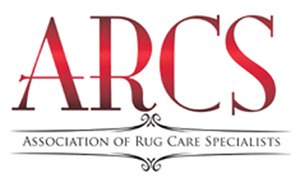
ABC Oriental Rug & Carpet Cleaning Co.
is a FOUNDING MEMBER of the
Association
of Rug Care Specialists.
"To Teach, Cultivate and Advance the Art and Science
of Rug Care"
GIVE THE
GIFT OF CLEAN!

Why not think 'outside the box' and give
a Gift Certificate for professional carpet, upholstery, or tile
& grout cleaning from ABC for any special occasion!
Does a special person have a favorite area rug or oriental rug that needs cleaning or repair? Just give us a call. You'll make their day!
Bring in the mats from a car and we'll clean them as well.
Contact
us if you live in the Ithaca, NY or surrounding areas and we will
tailor a special gift certificate just for you for any Special Occasion.

